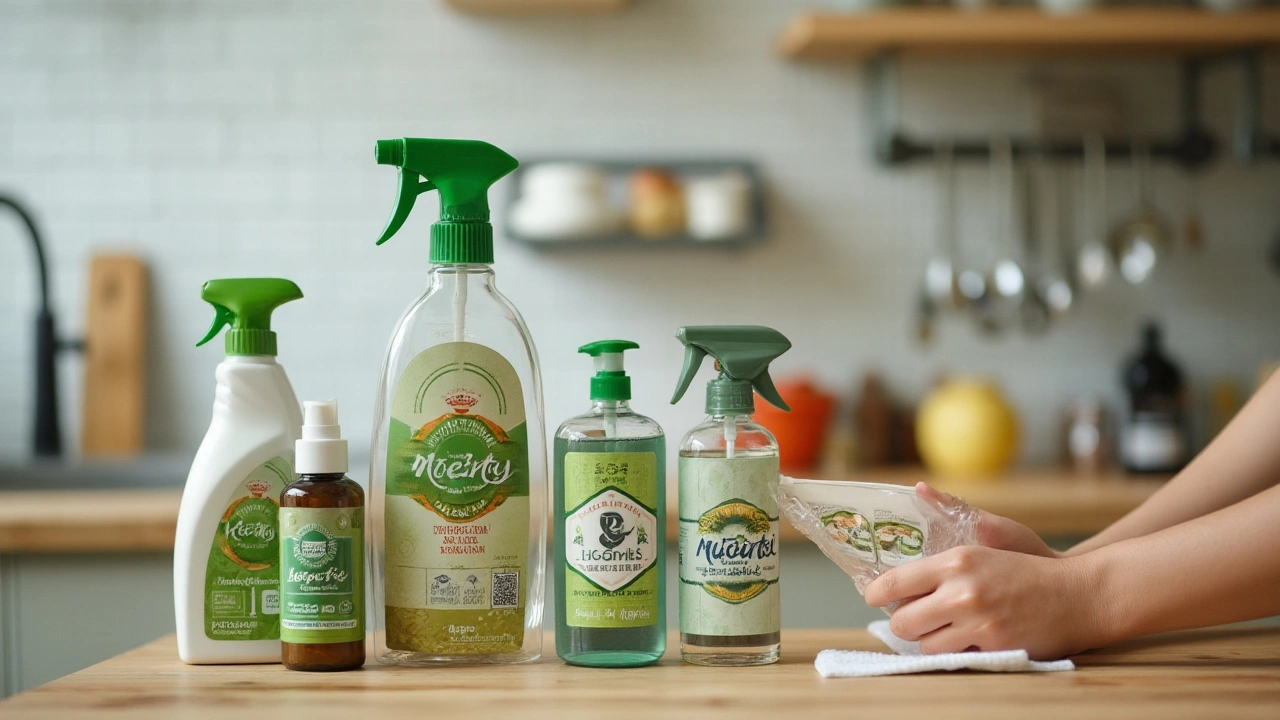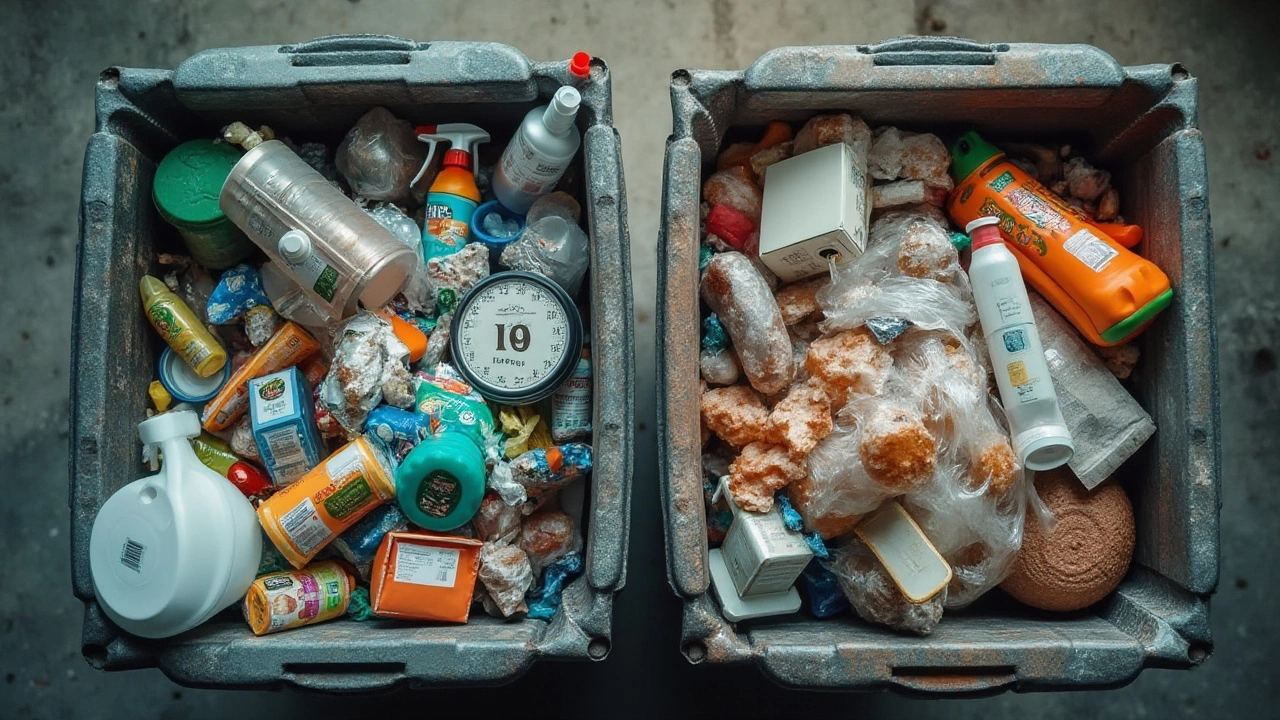In an age where climate change headlines dominate the news, eco-friendly seems to be on everyone’s lips. Yet, there remains a startling disparity in the cleaning industry, where several companies still resist the ecological tide. These giants often cling to traditional methods, compromising the planet for profit. In this exploration, we uncover the least eco-friendly names whose practices leave much to be desired when it comes to sustainability.
By understanding the red flags and environmental consequences of such companies, consumers can become more savvy about their choices. Is your favorite brand as green as it claims to be? Or could it be part of the problem? Let's dive into what makes a company an eco-villain in the world of cleaning products and what you can do about it.
- Understanding Eco-Friendly Cleaning
- Identifying the Major Polluters
- The Environmental Impact of Non-Green Practices
- Tips for Choosing Sustainable Cleaning Products
Understanding Eco-Friendly Cleaning
Eco-friendly cleaning is a concept that has taken root in the zeitgeist, yet its true essence often gets obscured by marketing hype. At its core, eco-friendly cleaning seeks to reduce adverse effects on the environment, health, and wellbeing. Traditionally, cleaning products have relied heavily on harsh chemicals that do an effective job at eradicating grime but do a less than stellar job at keeping ecosystems intact. Ingredients like phosphates and chlorine have been known to wreak havoc on waterways, harming aquatic life. In fact, a study by the Environmental Working Group found that many conventional cleaning supplies contain toxic substances linked to problems ranging from respiratory issues to ecosystem damage.
The journey toward sustainable cleaning has required businesses and consumers alike to re-evaluate what they prioritize when choosing products. The shift has seen an increased demand for brands that are transparent about their ingredient lists, free of synthetic dyes and fragrances, and packaged with recyclable materials. Eco-friendly cleaning doesn't stop with the ingredients; it extends into how the product is produced, tested, and packaged. This holistic approach often incorporates renewable energy sources and zero-waste manufacturing processes. A company that champions these efforts might highlight certifications like Green Seal or EcoLogo, which verify environmental responsibility. However, the market is ridden with brands that falsely claim green credentials, a practice known as greenwashing.
Historically, effective cleaning was synonymous with a strong chemical scent—a misleading notion that the stronger or more fragrant a product, the better it worked. This myth persists, although evidence now suggests otherwise. True eco-friendly cleaning options harness botanical extracts and natural minerals that gently, yet powerfully, dislodge dirt without leaving behind a harmful footprint. Interestingly, a Consumer Reports analysis pointed out that more than half of US households now choose cleaning products labeled as 'natural' or 'non-toxic'. This evolution indicates a growing awareness among consumers who now demand more, driving companies to innovate or risk losing their market share to more genuinely responsible brands.
Despite the progress, there are still many who question whether these green alternatives perform as well as their conventional counterparts. This skepticism stems from years of belief in

Identifying the Major Polluters
In the quest for understanding who holds the dubious title of the least eco-friendly companies in the cleaning sector, it's essential to peel back the corporate veil and look at their practices, policies, and products. These companies often produce an array of products filled with harmful chemicals that enter waterways and harm marine life and ecosystems when washed down the drain. Their packaging also leaves a considerable carbon footprint, as many shirk the responsibility of using recycled materials. Various well-known brands are under scrutiny, not just for the impact of their products, but for the transparency—or lack thereof—about their ingredients and manufacturing processes.
One of the red flags is the use of non-biodegradable ingredients in their formulations, which the Environmental Protection Agency has flagged for potential harm to both aquatic life and humans. These companies are often seen cutting corners with misleading labels that imply they are more environmentally friendly than they truly are. Research by The Environmental Working Group has highlighted several popular brands that fail to meet basic environmental safety standards. Such findings not only disrupt consumer trust but also demand a pressing need for change in industry standards.
"We must hold corporations accountable for their environmental footprints, and consumers play a crucial role in demanding transparency and responsibility," says Sandra Stewart, Executive Director of the Green Earth Alliance.
The manufacturing processes of these companies also contribute significantly to pollution, utilizing vast amounts of water and energy and often emitting greenhouse gases in copious amounts. Reports have shown that despite the claims of reducing carbon emissions, some cleaning companies are still lagging far behind sustainability goals set by international accords. Consumers can influence change by supporting brands that show a genuine commitment to reducing their environmental impact. However, with emerging regulations and consumer watchdogs on the rise, it's only a matter of time before these major polluters will need to adapt or face the consequences.

The Environmental Impact of Non-Green Practices
The cleaning industry is a multibillion-dollar sector that, despite newfound awareness, often employs practices that are anything but environmentally friendly. Many of these traditional methods involve the use of hazardous chemicals which, when washed away, end up polluting water systems and harming aquatic life. These chemicals, like phosphates and artificial fragrances, are often non-biodegradable and can persist in the environment, accumulating in the food chain with disastrous effects for wildlife and humans alike. The practices that allow these chemicals to permeate our environment are deeply ingrained in the manufacturing processes of some cleaning giants, making it a challenging issue to tackle without conscious efforts to shift towards eco-friendly cleaning solutions.
Air pollution from commercial cleaning products is another major concern. Volatile organic compounds (VOCs), present in many conventional cleaning formulations, contribute significantly to indoor air pollution, leading to respiratory issues and other health complications. The production and disposal of plastic packaging also add to the environmental stress. From the moment these products are manufactured, through to their point of disposal, the carbon footprint associated with non-green cleaning products is substantial. Studies show that a significant percentage of ocean pollution is attributed to the plastic waste of these products, affecting marine habitats and human livelihoods dependent on clean seas.
Dr. Jane Goodall once said, "You cannot get through a single day without having an impact on the world around you." Recognizing that impact and acting responsibly can lead to changes in these harmful practices.
The overflow of non-green practices doesn't just impact our ecosystems externally but also affects the indoor environment. The residual chemicals left in our homes can trigger allergies and skin conditions. The cumulative exposure to these toxins isn't just harmful to people but also raises the risk of these substances leaching into groundwater, affecting broader ecological health. Switching to eco-friendly cleaning alternatives mitigates these risks, emphasizing the importance of demanding sustainable practices from companies. This consumer pressure has already sparked a promising trend towards transparency and accountability in many forward-thinking corporations. The resultant positive environmental effects from these changes underline the need for the industry to fully embrace the green movement, both to protect consumers and to safeguard the planet for future generations.
Awareness grows around sustainability, the pressing need to replace antiquated industrial habits with eco-conscious methods becomes clearer. It's about preserving resources and ensuring a livable environment for the future. Companies need to shift from less sustainable resource extraction to processes that minimize ecological impact, utilizing renewable materials and energy sources to lessen their carbon footprint. As we continue to advocate for systemic changes, understanding the significance of non-green practices is vital in motivating both industries and individuals to act. With growing consciousness and small, significant changes, we can steer toward a future where the cleaning industry leaves a positive rather than damaging legacy.

Tips for Choosing Sustainable Cleaning Products
It's a jungle out there, navigating the world of eco-friendly cleaning products. Companies display labels that scream natural, green, and eco-conscious, but is it all just marketing fluff? The first step is to become a label detective. When you're in the store, squinting at the small print on a bottle, look for certifications from trusted third-party organizations like EcoLogo, Green Seal, or the EPA’s Safer Choice. These marks of approval mean that a product has been thoroughly evaluated for its environmental impact, ingredient safety, and effectiveness. Don't just take the front label's word for it; delve into that ingredient list. Aim for products with plant-based ingredients and avoid ones containing harsh chemicals like phosphates, phthalates, and synthetic fragrances.
Consider the packaging of the product, too. Many brands are now adopting sustainable packaging, which means they use recyclable materials or offer refillable options to cut down on waste. These small choices can collectively make a huge ecological difference. Engage with products that have biodegradable formulas and containers, reducing their harm once they wash down your drain. Does the brand commit to being carbon-neutral or support environmental causes? These are positive signs that they walk the green talk. A fascinating fact to keep in mind is that traditional cleaning products can release volatile organic compounds (VOCs) into the air, which contribute to indoor pollution. Eco-friendly alternatives frequently emit lower levels of VOCs, making them a healthier option for your home environment.
Brands that are truly devoted to sustainability embrace transparency. They freely provide information about their supply chains, ingredient sourcing, and production processes. If a company doesn’t openly share this information, it might be a red flag. Don't hesitate to reach out to manufacturers with questions if you're uncertain about their products' sustainability; a reputable company will be glad to respond and may even provide additional insights into their practices. Consumer reviews can also be a goldmine of information. Check out what others are saying on platforms dedicated to product reviews. Engaging with these communities might offer tips that you hadn’t considered.
Additionally, why not explore DIY options for cleaning solutions? Simple and effective, homemade cleaners often involve pantry staples like baking soda and vinegar, which cut through grime without adding to your carbon footprint. By preparing your concoctions, you're reducing dependency on commercial, packaged goods. Here's a fun quote by Michael Braungart, a notable chemistry professor, "Waste is a verb, not a noun." It reminds us that how we engage with products impacts the environment, underscoring our responsibility in choosing wisely.
